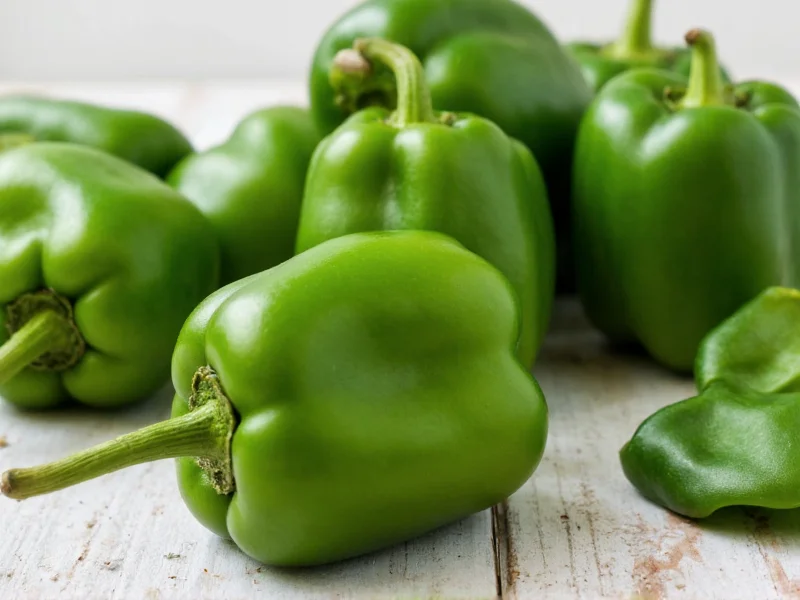Poblano peppers, scientifically known as Capsicum annuum, are a staple in Mexican cuisine and have gained popularity worldwide for their rich flavor and manageable heat. Understanding their spiciness level is essential for home cooks and culinary enthusiasts who want to incorporate them into recipes without unexpected heat surprises.
Understanding Poblano Pepper Heat
When evaluating how spicy are poblano peppers, it's important to consider their position on the Scoville scale, which measures capsaicin concentration—the compound responsible for pepper heat. Poblanos sit at the lower end of the spicy spectrum:
| Pepper Type | Scoville Heat Units (SHU) | Heat Level Description |
|---|---|---|
| Poblano | 1,000-2,000 | Mild, gentle warmth |
| Jalapeño | 2,500-8,000 | Moderate to hot |
| Bell Pepper | 0 | Not spicy |
| Habanero | 100,000-350,000 | Very hot |
This comparison shows why poblano pepper heat level compared to jalapeno is significantly milder—typically about half as spicy as even the mildest jalapeños. When substituting peppers in recipes, this difference matters considerably for achieving the desired flavor profile.
Factors That Influence Poblano Spiciness
Several elements can affect how spicy your poblano peppers turn out:
- Growing conditions: Soil quality, water availability, and sunlight exposure can increase capsaicin production
- Ripeness: Riper (redder) poblanos tend to be slightly spicier than greener ones
- Individual variation: Even within the same plant, some peppers may be noticeably hotter
- Seed and membrane content: The white ribs and seeds contain most of the capsaicin
Understanding these variables explains why are some poblano peppers spicier than others you might encounter. If you're sensitive to spice, removing the seeds and inner membranes before cooking will significantly reduce the heat level while preserving the pepper's distinctive flavor.
Culinary Applications of Poblano Peppers
The mild heat of poblanos makes them incredibly versatile in the kitchen. Chefs appreciate them for using poblano peppers in mild recipes where you want subtle warmth without overpowering other flavors. Common applications include:
- Chiles Rellenos: Stuffed poblano peppers, often with cheese
- Mole sauces: Where their earthy flavor complements complex spice blends
- Rajas con crema: Sliced roasted poblanos in cream sauce
- Guacamole and salsas: Adding depth without excessive heat
- Stews and soups: Providing background warmth
When roasting poblanos, their skin blackens easily, which many cooks remove before use as it can be tough. The roasting process also enhances their natural sweetness, which balances their mild heat—making them ideal for are poblano peppers hot in recipes that require nuanced flavor rather than intense spice.
Handling Poblano Peppers Safely
While poblanos are mild, proper handling still matters:
- Wear gloves when handling large quantities to prevent capsaicin transfer to sensitive areas
- Always wash hands thoroughly after handling, especially before touching your face
- Use separate cutting boards for peppers to avoid cross-contamination
- If you experience burning, dairy products like milk or yogurt can help neutralize the capsaicin
For those exploring mild spicy peppers for cooking, poblanos offer the perfect introduction to incorporating heat into dishes without overwhelming spice. Their rich, earthy flavor with just a hint of warmth makes them a favorite among chefs who want to add complexity without excessive heat.
Storing and Selecting Quality Poblanos
When shopping for poblanos, look for:
- Firm, glossy skin without wrinkles or soft spots
- Deep green color (though red-ripe poblanos are also available)
- Heavy weight for their size, indicating freshness
Store fresh poblanos in the refrigerator's crisper drawer for up to two weeks. For longer storage, roast, peel, and freeze them in airtight containers where they'll maintain quality for 6-8 months. This preparation method is perfect for maintaining consistent heat levels in your poblano pepper recipes throughout the year.
FAQ
How does poblano heat compare to other common peppers?
Poblanos measure 1,000-2,000 Scoville units, making them milder than jalapeños (2,500-8,000 SHU) but slightly spicier than bell peppers (0 SHU). They're about half as hot as the mildest jalapeños, which explains why they're considered a mild pepper suitable for those who prefer subtle heat in their dishes.
Can I reduce the spiciness of poblano peppers in cooking?
Yes, removing the seeds and white membranes (ribs) significantly reduces poblano heat, as these parts contain most of the capsaicin. Roasting poblanos also mellows their heat while enhancing their natural sweetness, making them ideal for mild recipes where you want flavor without intense spice.
Why do some poblano peppers taste hotter than others?
Poblano heat varies due to growing conditions, ripeness, and individual plant genetics. Stressors like inconsistent watering or extreme temperatures can increase capsaicin production. Riper (redder) poblanos often have slightly more heat than greener ones, and even peppers from the same plant can vary in spiciness.
Are dried poblano peppers (ancho chiles) spicier than fresh ones?
Dried poblanos (called ancho chiles) have a similar heat level to fresh poblanos (1,000-2,000 SHU) but with a more concentrated, smoky-sweet flavor. The drying process doesn't significantly increase heat, though the flavor becomes more complex, making them excellent for mole sauces and other traditional Mexican dishes.











 浙公网安备
33010002000092号
浙公网安备
33010002000092号 浙B2-20120091-4
浙B2-20120091-4